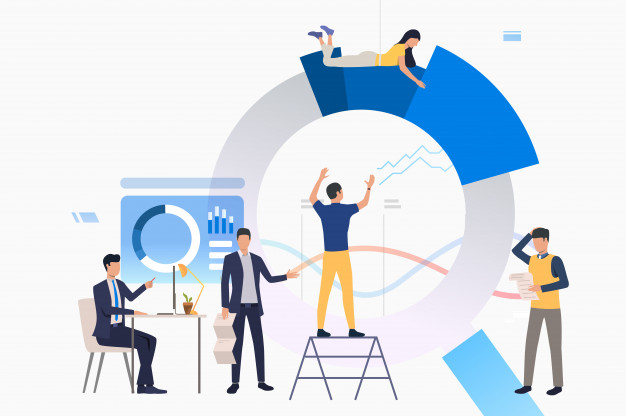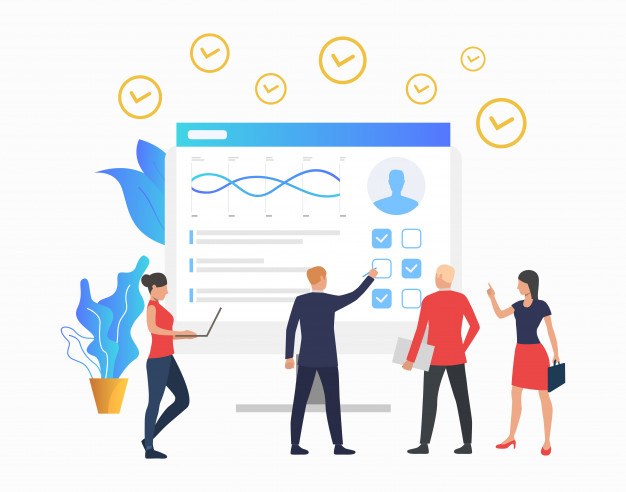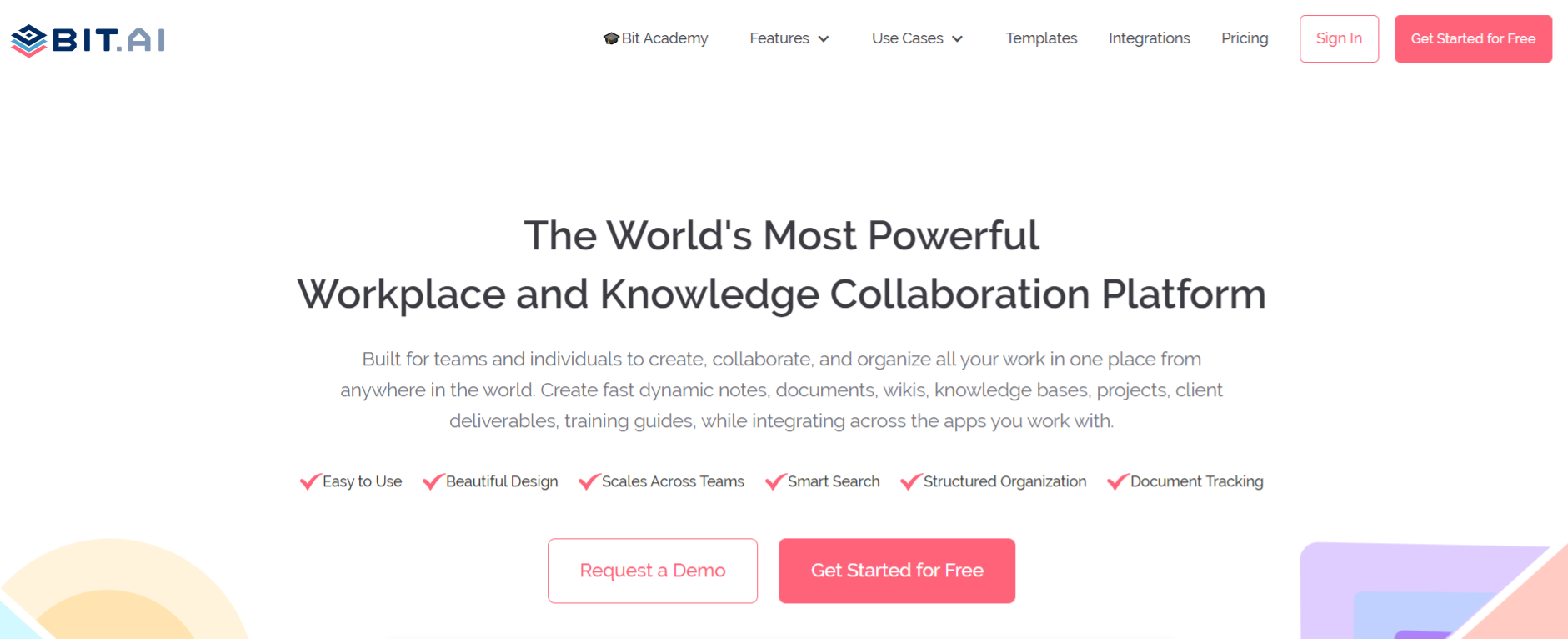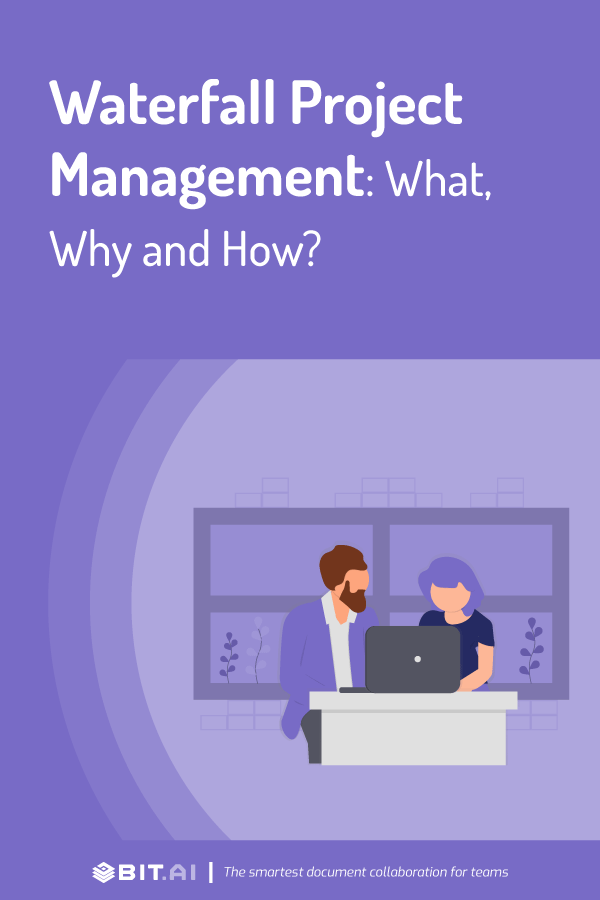Managing a project requires a lot of hard work and dedication on the part of the project manager. Documenting the requirements, coordinating with the team and external stakeholders, assigning tasks and responsibilities, managing resources, keeping things under budget, and delivering the project on time are some of the many duties resting on the shoulders of a project manager.
This is why there are many project management techniques and methodologies out there to help guide project managers and support them in this mammoth of a task. One of the most commonly used and straightforward project management techniques used by companies all around the world is the waterfall project management methodology.
In this blog post, we are going to uncover exactly what waterfall project management is, what are its key elements, and finally discuss its pros and cons. Read on…
What is the Waterfall Project Management? (Definition)
The waterfall project management model involves dividing project activities into linear, sequential phases, with each phase depending on the deliverables of the previous one. This means that project development begins with a starting point and all subsequent phases are implemented only when the former one is completed.
In the waterfall project management methodology, you are not allowed to go back to a previous phase and can only revisit a phase if you start over from the beginning.
The waterfall model is often touted as the first software development model and was originated in the manufacturing and construction industries. As in construction and manufacturing, you can’t iterate or go back a phase once you have already built something (Example, you cannot go back once you have already built a bridge!), the waterfall model prohibited such advances in the software development process as well.
 The first formal description of the waterfall model is often cited as a 1970 article by an American computer scientist, Winston W. Royce. Since the waterfall model was si rigid, it required immense planning and execution to get it right as you didn’t have the luxury of going back without starting over.
The first formal description of the waterfall model is often cited as a 1970 article by an American computer scientist, Winston W. Royce. Since the waterfall model was si rigid, it required immense planning and execution to get it right as you didn’t have the luxury of going back without starting over.
Phases of waterfall project management
The waterfall model of project management is usually implemented in 8 phases: specific phases of the system vary somewhat from source to source, but they generally include: conception, initiation, requirement, design, implementation, testing, delivery, maintenance.
1. Conception: The first stage of the waterfall model is the conception stage where the project begins with an idea. During this stage, the validity of the idea, its baseline analysis, cost-benefit ratio, benefits, and more are discussed.
2. Initiation: Once the idea is validated and given the green signal, a project team is hired to execute the project. Documentation is done involving defining the scope, objectives, and deliverables fo the project.
3. Requirement gathering and analysis: In this stage, the project manager is asked to procure everything required for the successful execution of the project. Gathering requirements involve meeting with the stakeholders, conducting interviews and questionnaires, brainstorming with the project team, and more. All requirements should be documented (you can use a documentation tool like Bit for this) and should be shared with all the project stakeholders.
4. System design: Once the team understands the requirements, the project workflow is designed. The team specifies design blueprints and creates a mockup of what the final product will look like, along with the steps needed to get there. No coding takes place during this phase but the type of programming languages to be used or other technical requirements are specified in this phase.
 5. Implementation: Once you know what you need to build, the implementation begins. Programmers take data from the previous stages and create a fully functional product. Coding usually takes place in batches and different team members are asked to work on different modules that are integrated at the end of this phase.
5. Implementation: Once you know what you need to build, the implementation begins. Programmers take data from the previous stages and create a fully functional product. Coding usually takes place in batches and different team members are asked to work on different modules that are integrated at the end of this phase.
6. Testing: Once the programming is done, its time to test what the team has built. Testers are then put to work to find out any bugs or inconsistencies in the system and methodically report any problems. The report is then sent to senior management and the programming team for re-evaluation.
7. Delivery/deployment: The product or service is officially launched during this phase as the team submits the deliverables to be deployed.
8. Maintenance: The final stage is an ongoing stage where the team has delivered the product to the client and is now working to ensure its smooth performance. If an issue arises, the team is supposed to work at resolving it by either releasing new updates or patches.
Read more: What is an Implementation Plan & How to Create One?
Why Create a Waterfall Project Management Plan?
While water project management is most common amongst manufacturing and construction companies, there are some benefits of using such methodology in software development as well.
1. Knowledge stays within the organization
The waterfall model forces managers to extensively document the entire project. Thus, knowledge doesn’t get lost if someone leaves the organization. Moreover, its easier to train new employees if you have every aspect of the project documented.
2. Easy to analyze
Since the waterfall project management is linear and sequential in nature, it’s easy to gauge project progress by looking at which stage of the project plan is being implemented.
As no new phase can begin without prior execution of the former one, managers and stakeholders can analyze project progress from afar, reducing the number of progress reports and routine check-ups. The project’s timeline is also crystal clear as managers can quickly determine if a project is moving on schedule or not.
Read more: Management Report: What is it & How to Create it?
3. Train people easily
Since the basis of the waterfall project management is documenting the entire project execution process in advance, it makes it easier to train people and assign roles and responsibilities.
If you need to add more labor to your existing team, you can train the new team member by sharing a copy of the documentation with them. New members can thus, quickly get up to speed with the current developments and get to work.
4. Managerial benefits
The above-mentioned benefits mean that projects following a waterfall model are easier to manage. The sequential nature promotes a crystal clear project timeline, allowing managers to make decisions quickly and allocate resources as and when needed.
Working in linear phases also helps managers focus on interacting with the team working at the current phase rather than struggling to manage the entire project team.
5. Better Execution
The waterfall methodology is quite rigid as it prevents teams to go back a phase in case something isn’t working as intentioned.
However, its rigid nature forces managers to better plan, brainstorm, and document the entire project execution as failure to do so will result in a complete waste of time and money. Taking the time out to better prepare for the project’s execution saves you a lot of headaches in the future.
Read more: Procurement Management Plan: What, Why, and How to Create?
Challenges in Waterfall Project Management Approach
Despite the advantages, like most things, there are a few disadvantages to using the waterfall project management approach.
1. Procuring requirements can be challenging
It can be really intimidating for the client to come up with all the requirements of the project at the beginning of the project. More often than not, clients are unable to visualize the end product clearly and cannot give minute details. Since the waterfall model relies heavily on requirements, if you mess up this phase, the entire project is set up for failure.
2. Not what the client needs
A majority of the time, clients are unable to articulate their needs and only suggest changes until after they have seen some progress.
 Since the waterfall model takes away client feedback from the chain, they only see the final product. If they didn’t like what they see, the entire project plan would need a major overhaul.
Since the waterfall model takes away client feedback from the chain, they only see the final product. If they didn’t like what they see, the entire project plan would need a major overhaul.
3. No going back
Due to its linear nature, it’s very difficult (and costly) to go back to a previous phase and implement changes. Thus, it’s crucial to map out every detail clearly during project planning and avoid costly redos.
4. Domino effect
As a new phase cannot start before the completion of the prior one, if one phase took more time to execute, all the subsequent phases will be late, pushing the project deadline further and further.
5. Rigid
The waterfall model is way too rigid and lacks any sort of flexibility to incorporate any external events like delays, budget issues, etc.
6. Testing is done too late
Testing is done at the end of the project which means that programmers get no feedback until after they have written and executed their code. This could result in bug-ridden software and a below-par end product.
Need a tool for Project Documentation? Try Bit!
Documentation is key in successful project planning and implementation, which is why smart project managers use a documentation tool like Bit to create a sound, collaborative, and interactive project documentation for their team.
 A must-have tool for project managers, Bit.ai is an all-in-one document collaboration platform designed for the modern-day workplace. Bit provides a commonplace for workers to collaborate in real-time and create implementation plans, brainstorm ideas, assign tasks, store project assets, and get work done collaboratively.
A must-have tool for project managers, Bit.ai is an all-in-one document collaboration platform designed for the modern-day workplace. Bit provides a commonplace for workers to collaborate in real-time and create implementation plans, brainstorm ideas, assign tasks, store project assets, and get work done collaboratively.
Simply create a workspace, add your team members, and start creating your workplace documents quickly! You can further share these documents with external clients, partners, sub-contractors, etc., and get detailed insights on how they interacted with your documents!
For both internal as well as external documentation, Bit is the go-to choice of software for project managers in 100+ countries over the world.
Here are some of the main benefits of using Bit:
- Distraction-free editor: Bit’s editor is minimal to allow you to focus on your work yet powerful enough to support all your editing needs.
- Organized workspaces and folders: Bit brings all your project documents and details in one place by allowing you to organize information in workspaces and folders.
- Real-time collaboration: Collaborate with your team and management and feedback in real-time using @mentions and highlight features as every document comes with its separate comment stream.
- Content library: Bit has a content library where you can store and share media assets. You can save images, files, videos, PDFs, and content easily and can access it at any point.
- Rich embed options: Bit.ai integrates with over 100+ web applications (Ex: YouTube, PDFs, LucidChart, Google Drive, etc.) to help you create media-rich and interactive implementation plans or other workplace documents.
- Smart search: Bit has very robust search functionality that allows anyone to find information quickly. You can search for folders, files, documents, and content inside your documents across all of your workspaces.
- Interlink documents: Bit allows employees to create unlimited documents and interlink them to create robust internal wikis.
- Templates: Bit has a plethora of amazing templates that cut your work in half and help you kickstart your work quickly.
Watch the video below to learn more or sign up for a FREE account and start exploring yourself!
Final Words
Waterfall project management is one of the first known project management methodologies. Though there are better, more agile project management methods available nowadays, there are still some learnings to be taken from the waterfall model no matter which management technique you end up using for your project.
One such thing is the process of carefully documenting all project requirements, timeline, and deliverables. Documentation is key to successful project execution, in training new and existing staff and keeping knowledge within the organization and the waterfall model teaches us precisely that.
So, what are your thoughts on the waterfall project management method? Do you think it’s still useful in today’s fast-paced, iterative world? Do let us know by tweeting us @bit_docs. Good luck!
Further reads:
- Project Scope: What is it and How to Write it?
- Reputation Management: What is it & How to Do it?
- Action Plan: What is it & How to Write it? (Steps and Format)
- Project Management Schedule: What, Why, and How!
- 10 Best Microsoft Project Alternatives You Must Explore!
- How to Create a Project Management Communication Plan?
- How to Create a Product Plan the Right Way?
- 10 Best Free Project Management Software in 2022
- What Is Change Management And How To Cope With It?

Related posts
Bit.ai | Watch to Learn More
What is Bit.ai?
Bit.ai is an innovative AI-driven knowledge and Document Managment suite designed to empower knowledge workers by streamlining the creation of, documents, wikis, and notes. With an intuitive interface and seamless integration, Bit.ai acts as a versatile assistant to help you collaborate, generate, organize, and visualize your ideas effortlessly. Whether you are drafting a report, managing a project, collaborating with your team or clients, or brainstorming new concepts, Bit.ai brings intelligence and creativity to every aspect of your work process.



